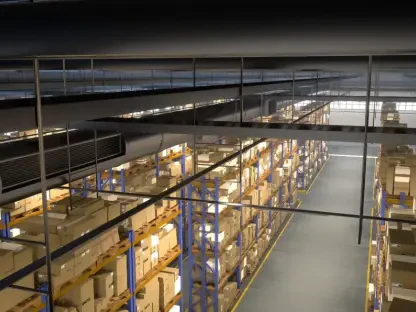Introduction to Rail Freight Revival in East Gippsland
Imagine a region rich in resources and potential, yet constrained by outdated transport systems, struggling to move goods efficiently to major markets. East Gippsland, a vital area in Victoria, Australia, has faced this exact challenge for decades as rail freight services dwindled, leaving road transport as the primary, often costlier, option. The historical decline of rail in this region has limited economic growth, with infrastructure falling into disuse due to insufficient cargo volumes to justify operations.
Enter Gippsland Critical Minerals (GCM) with its ambitious Fingerboards Critical Minerals Project, a game-changer poised to breathe new life into rail freight. This initiative aims to transport significant quantities of critical minerals, creating a much-needed demand to revive rail services. The project has sparked discussions about reintroducing a Melbourne to Bairnsdale rail line, a move that could redefine logistics in the region.
The significance of this proposed rail service extends beyond a single company’s needs. It promises to reconnect East Gippsland to major trade hubs like Melbourne Port, potentially slashing transport costs and boosting competitiveness for local industries. This development could mark a turning point, addressing long-standing logistical bottlenecks and setting a precedent for regional revitalization through strategic infrastructure investment.
Economic Potential of Rail Freight in East Gippsland
Key Drivers and Opportunities
At the heart of this rail freight revival lies GCM’s projected output, which is expected to exceed 10,000 containers annually. This substantial volume provides a solid foundation, often referred to as a “base load,” to make rail operations commercially feasible. The consistent demand from a single major player like GCM could stabilize the service, ensuring regular runs that benefit the broader region.
Beyond minerals, this rail initiative opens doors for other key industries in East Gippsland, such as agriculture, horticulture, and timber. These sectors have long grappled with high transport costs and inefficiencies when moving goods to urban markets or export points. A reliable rail service could lower expenses, enhance market access, and encourage expansion among local producers, fostering a ripple effect of economic activity.
Community engagement also plays a pivotal role in shaping this project. Local passion and input have driven efforts to ensure that the rail service addresses diverse needs, rather than focusing solely on one industry. This collective vision aims to create a logistics solution that supports small businesses and larger enterprises alike, amplifying the potential for widespread prosperity in the region.
Projected Growth and Economic Impact
Preliminary studies underscore the commercial viability of the Melbourne to Bairnsdale rail service, largely thanks to GCM’s guaranteed cargo volume. These analyses suggest that with a steady flow of goods, the rail line could operate sustainably, running approximately three times a week. Such regularity would provide a dependable transport option, encouraging further investment in the area.
Looking ahead, the economic impact on East Gippsland appears promising, with projections indicating significant job creation in logistics, maintenance, and related sectors. Increased trade activity, driven by cheaper and more efficient freight options, could elevate the region’s profile as a competitive supplier of goods. This growth is expected to gain momentum if the service launches as planned between 2025 and 2027 or 2028, pending necessary approvals.
Moreover, the rail revival positions East Gippsland as a potential logistics hub within Victoria. By linking rural producers directly to Melbourne Port, the service could attract additional industries seeking cost-effective transport solutions. This strategic advantage might spur long-term development, transforming the region into a critical node in Australia’s supply chain network.
Challenges in Reviving Rail Freight Services
Historically, sustaining rail freight in East Gippsland has proven difficult due to low cargo volumes that failed to justify operational costs. Many rail lines fell into disrepair or were repurposed as demand shifted toward road transport, leaving the region without a viable alternative. This legacy of underutilization remains a hurdle, as reviving services requires overcoming skepticism about profitability.
Logistical challenges also loom large, particularly the need for new infrastructure like rail sidings to handle loading and unloading efficiently. Coordination with existing freight networks poses another obstacle, as integrating a revived service into broader systems demands precise planning and investment. Without seamless connectivity, the project risks delays or inefficiencies that could undermine its success.
To address these issues, collaboration through the Freight Rail Taskforce (FRT) offers a pathway forward. This group is working to identify solutions, such as leveraging recent infrastructure upgrades like enhanced bridge weight capacities to support heavier loads. Strategic partnerships and targeted funding could further mitigate barriers, ensuring that the rail service is both practical and sustainable in the long run.
Collaborative Framework and Stakeholder Engagement
The formation of the Freight Rail Taskforce (FRT) marks a significant step toward realizing this rail revival. Comprising industry leaders, freight experts, government representatives, and local businesses, the taskforce serves as a platform for unified planning. Its primary purpose is to align the project with regional priorities, ensuring that diverse perspectives shape the outcome.
A key focus of the FRT is defining specific freight needs across East Gippsland, from identifying priority industries to mapping out optimal routes. By developing a comprehensive logistics strategy, the taskforce aims to maximize the rail service’s impact, ensuring it supports economic goals while addressing practical constraints. This structured approach helps balance competing interests and fosters consensus among stakeholders.
GCM has also demonstrated a commitment to community-driven solutions, notably by incorporating local feedback to extend the rail service from Fernbank to Bairnsdale. This adjustment reflects a desire to make the project inclusive, benefiting a wider area and reinforcing trust between the company and residents. Such responsiveness strengthens the initiative’s foundation, highlighting the value of collaboration in achieving shared objectives.
Future Outlook for East Gippsland’s Freight Landscape
Looking toward the horizon, the revival of rail freight holds transformative potential for East Gippsland’s connectivity to Melbourne Port and beyond. A reliable rail link could streamline access to national and international markets, reducing dependence on road transport and cutting transit times. This enhanced integration might position the region as a vital link in broader trade networks.
Innovation in freight logistics also looms as a key factor, with rail offering sustainability benefits over trucking, such as lower carbon emissions per ton of cargo. As environmental considerations grow in importance, shifting goods to rail could align East Gippsland with global trends toward greener supply chains. This shift may attract eco-conscious businesses, further boosting economic prospects.
However, external variables like regulatory approvals, fluctuating economic conditions, and market demand will shape the project’s trajectory. Delays in securing permissions or shifts in commodity prices could impact timelines and viability. Monitoring these factors closely will be essential to adapt plans as needed, ensuring the rail service remains resilient amid uncertainties.
Conclusion: A New Era for East Gippsland’s Economy
Reflecting on the discussions, the initiative led by Gippsland Critical Minerals to revive rail freight in East Gippsland emerges as a beacon of hope for regional prosperity. The collaborative efforts through the Freight Rail Taskforce underscore a shared commitment to overcoming historical and logistical challenges. This project stands as a testament to what strategic vision and community involvement can achieve in unlocking economic potential.
Moving forward, stakeholders should prioritize securing timely approvals and funding to maintain momentum. Investing in infrastructure upgrades and fostering partnerships with freight operators could ensure seamless implementation. Additionally, exploring incentives for local industries to adopt rail transport might accelerate uptake, solidifying the service’s role in the region’s growth.
Beyond immediate steps, considering pilot programs to test operational models before full rollout could mitigate risks. Engaging with policymakers to advocate for supportive regulations would also prove crucial. These actions, rooted in adaptability and foresight, could pave the way for East Gippsland to redefine itself as a logistics powerhouse, driving sustainable development for years to come.









